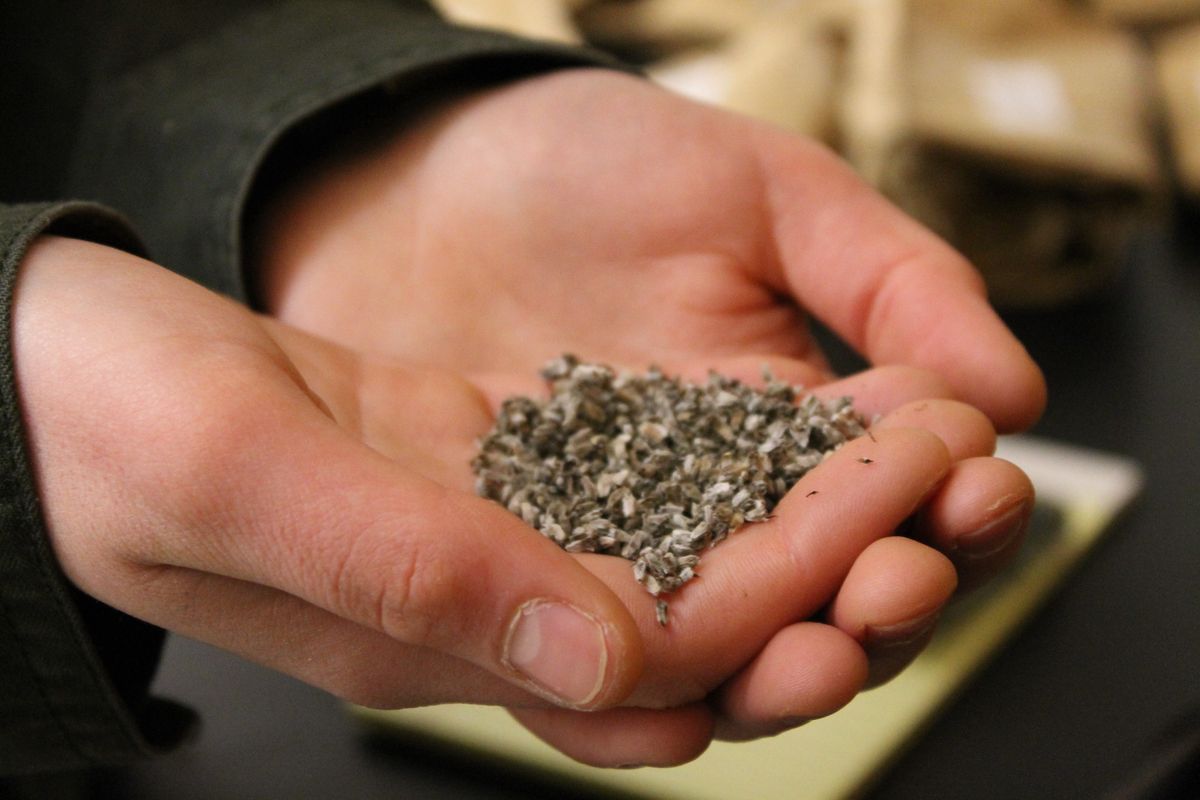Student makes prairie packs to promote sustainable landscaping

Nowadays, the trend is to have enough plants to create a small jungle in one’s living space. Before that, senior Mia Werger had a prairie.
Before she was in high school, she sectioned off a portion of land the size of a twin-sized mattress in her parents’ backyard and cultivated it into a tiny haven for native plants and accompanying inhabitants like bees. She has always liked grass (not that kind) — from Indiangrass to Big Bluestem to wildflowers like Purple Prairie Clover — all except for one: the kind that fills the majority of residential yards.
“It’s not that turf grass is bad. It’s just that you lose so many opportunities for doing good,” Werger said, explaining the numerous limitations of these types of trimmed grasses. Turf grass is as short on top as it is beneath the dirt, meaning it does little for those living above ground and cannot take advantage of what is beneath — the soil.
Turf grass roots compact and clump soil in order to capture more water for the plant itself. Yet, this also means less water overall can filtrate through these top three inches of soil, leading to more runoff. If folks are consistently treating their yards for weeds, the excess chemicals can mix in with that runoff too.
Because of less water getting stored underground, droughts can hit areas harder as well. Not to mention, plants are capable of sequestering carbon into the soil via their roots. Compared to native prairie grasses — some with root systems that can reach over six feet down — turf grass does little.
Since coming to Augustana, Werger continues to be fascinated and invested in learning all she can about prairie restoration, and she has one idea for bringing this passion to the Sioux Falls community.
Currently, she is a member of the Sioux Falls Sustainability Master Plan steering committee. Every 10 years, the community updates its master plan for applying sustainable practices within the city, and this year the plan will be readdressed.
While attending a meeting for the committee, several residents from the area approached Werger and the committee about ways in which they could plant and care for native plants in their own yards. Unfortunately, not many resources were available for aiding these folks hoping to foster sustainability efforts in their communities.




“I wanted to see how simple I could make the procedure of restoring a little plot of prairie in people’s yards in the city, because I want to see a cultural shift to where it’s no longer cool to have lawn grass and people want to do this,” Werger said.
She’s beginning her work into putting together prairie-starter kits as part of her final Civitas project.
So far, the kits include packets of seeds from native prairie grasses and wildflowers, an informative booklet to guide all prospective gardeners, regardless of experience level, and basic tools such as tarps for land prep. Each kit is designed to cover about 200 square feet in the yard, which is roughly the size of a small stretch of residents’ boulevards.
Most of the thousand or so of seeds Werger has preparedfor the kits were given to her by Craig Spencer, a retired Augustana professor, and Carter Johnson, a professor of ecology from SDSU. Currently, they are working together with the non-profit organization, EcoSun Prairie Farms, at Good Earth State Park, to make prairie restoration profitable for farmers.
Regrowing prairies is no small task, even in the form of a small garden, Werger cautions. The seeds themselves have evolved to not start growing until having undergone a hard freeze for a set number of days, which means they may not start growing for an entire year if planted in the spring. With a bit of assistance from a committed helping hand, though, these seeds, of course, will endure South Dakotan weather for the long-term.
“Nature isn’t out there. It’s in here,” Werger said, sharing her hopes for connecting people with ways to lead more sustainable lives. Ecosystems are already everywhere, even residing in the limited turf grass in residential backyards. So, she asks, why not do better to integrate healthier ecosystems, however small?
https://public.flourish.studio/resources/embed.js
Drag the white circle to see a natural prairie. Graphic by Mia Werger and Alexa DeVos.
SEE NEXT: Werger spreads seeds of environmental awareness to the last frontier



